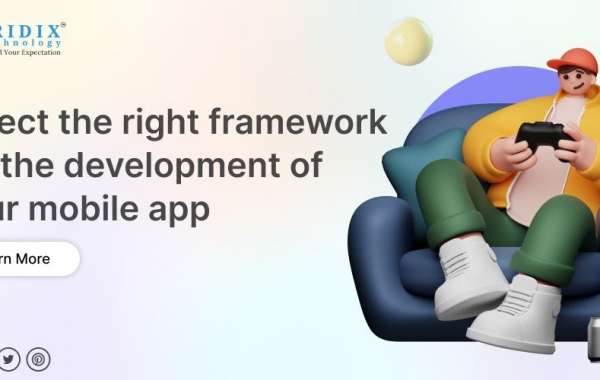There are many different mobile development frameworks that have been around for decades and have helped move the ecosystem of native mobile app and mobile cross-platform app development systems forward. These frameworks include industry standards, open-source systems, and hybrid cloud-development platforms (PaaS).
For the inner workings of any framework, businesses should think about three main things:
- What was the point of making the framework?
- Specifics: What programming language was used to make
- framework, and what integrated platforms does it use?
- What are the four reasons why the framework is a good choice?
Frameworks like Flutter, React Native, Xamarin, Ionic, and PhoneGap are used to make apps for mobile devices.
- Flutter is an open-source framework that Google made and put out in 2017 for making mobile apps. It is free to use and can render at 120 frames per second.
- The framework, which was built with C, C++, and Dart, is mostly used to make apps for Android, iOS, Windows, Mac, Linux, Google Fuchsia, and the web.
- Flutter is most useful because it is free and can be used to make apps for multiple platforms. It's bad because most of it needs to be written in Dart, which is not a very common language.
React Native
React Native is an open-source mobile app development framework that Facebook made and released in 2015 to improve the native Facebook app and all native mobile apps.
JavaScript, Java, C++, Objective-C, Objective-C++, and Python were used to write React Native. It is used to make apps for Android, iOS, the Web, and the Universal Windows Platform (UWP), all of which use the native platform's features. Because of this, React Native is a reliable and fast framework.
Xamarin
Xamarin is a set of cross-platform frameworks for Android and iOS that are owned by Microsoft and use the CLI (Common Language Infrastructure) and Common Language Specifications/Microsoft.NET.
The framework came out in 2011, and it works with C# code to make apps for Android, iOS, and Windows. It also offers native user interfaces and the ability to share code across multiple platforms, such as Windows, macOS, and Linux. Xamarin is useful because it lets you make apps that work on multiple platforms and are written in C#.
Ionic
Ionic is a software development kit (SDK) and a framework for making hybrid mobile apps. Hybrid apps are mobile apps that use web technologies to make them work. Ionic came out in 2013 as a framework that makes it easy and strong to make hybrid mobile apps.
Ionic was written in JavaScript, and you can use it to make apps that work on Android, iOS, Windows, Desktop, and Web browsers. Then, these apps are sold through app stores for each platform and installed with Cordova.
Hybrid apps can be made with Ionic, which is a framework. It is both strong and easy to bend.
Which Framework Should You Choose?
When making a mobile app, choosing which framework to use is a very important step that needs to be thought out carefully. The most important parts of mobile app development are the app's single goal, its requirements, and its biggest challenges, as well as the most important benefits of the chosen development framework and how those benefits fit with the app's important parts, like its speed, performance, security, scalability, etc.
A key part of the mobile SDLC is the selection process. It will have an effect on how the mobile app is made and how it works. In the end, what effect the app has on your company's bottom line will depend on the choices you make. Hybrid apps can be made with Ionic, which is a framework. It's very soft and easy to bend.







